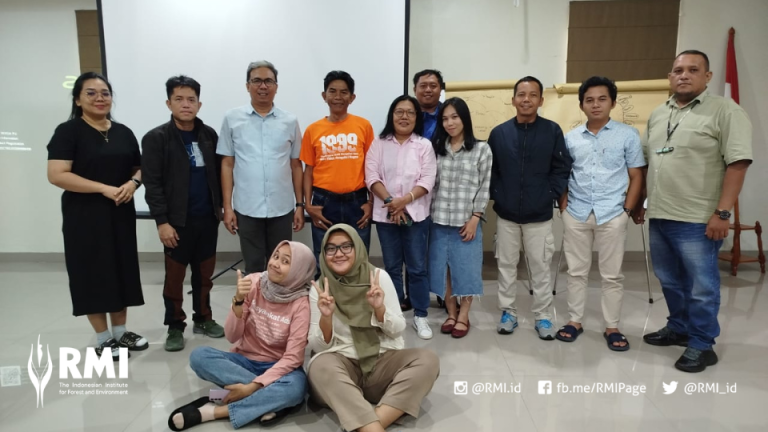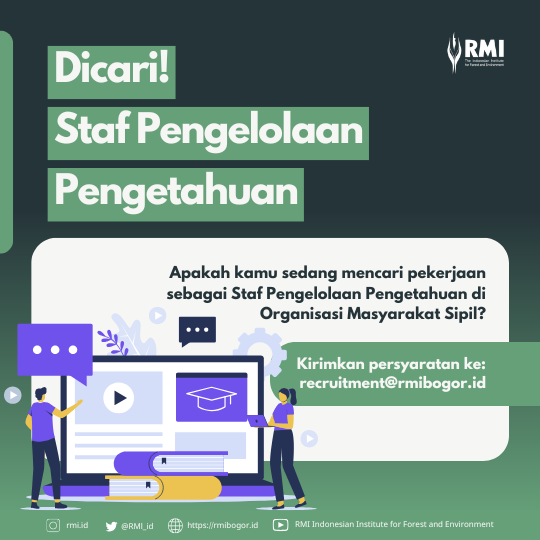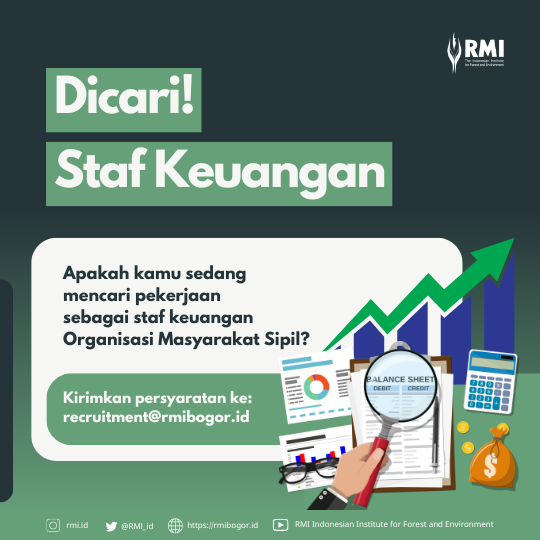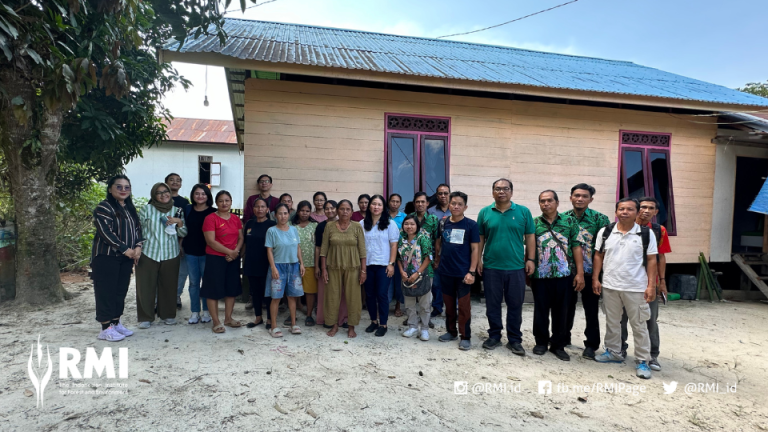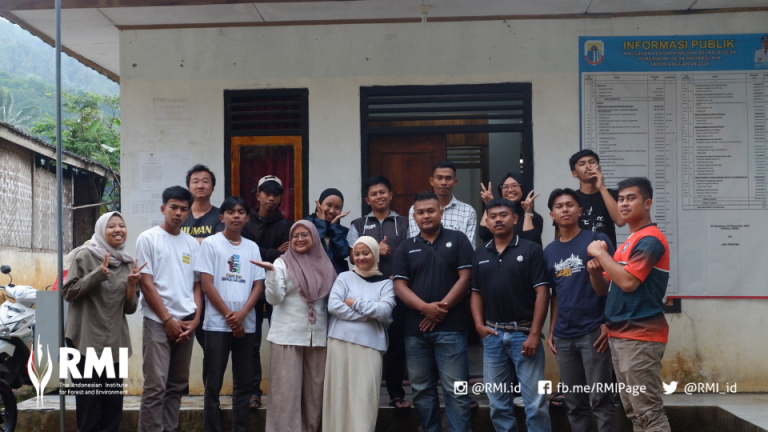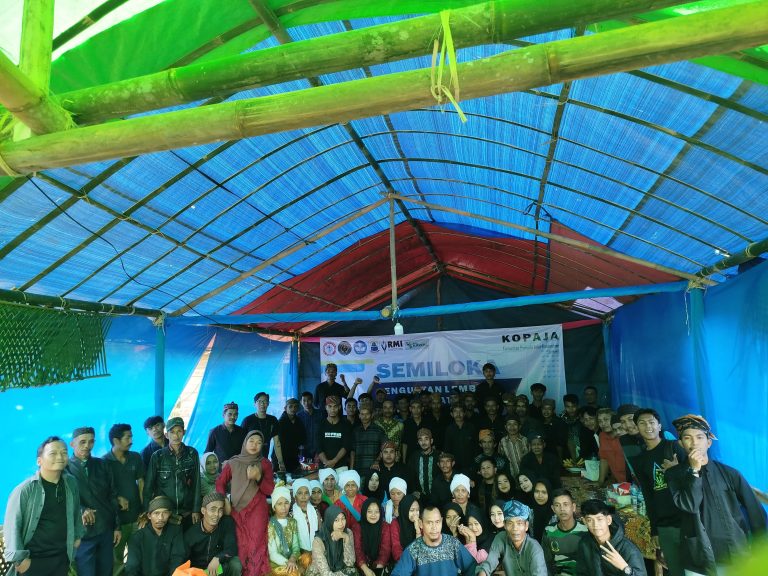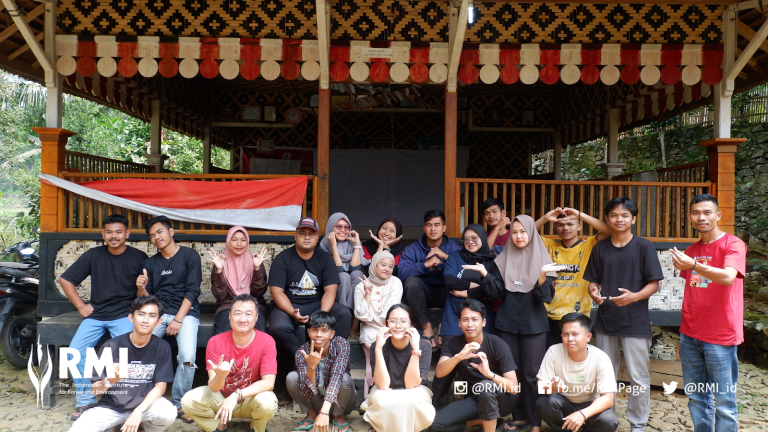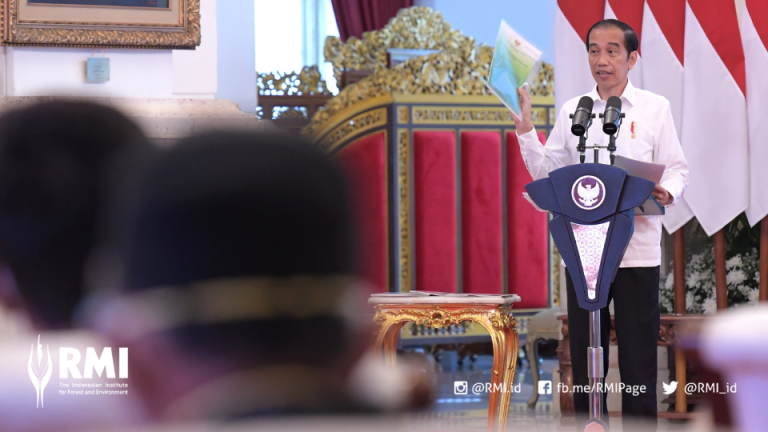
Indigenous people have their own local wisdom in protecting the environment and managing their natural resources. BRWA (2009) states that forests located in indigenous peoples’ territories are of good quality. Seeing this, the local wisdom should be an example for wider community, especially young people in protecting the environment.
On July 25, 2020, Relawan4Life, a youth movement assisted by RMI, conducted an online discussion called Disaring through Zoom, entitled “Learning to Manage the Environment from Indigenous Peoples “. The purpose of this online discussion was to invite other young people to get to know the local wisdom possessed by indigenous peoples.
This discussion was led by Febrianti Valeria, a student of Political Science at the Christian University of Indonesia (UKI), who is also a member of Relawan4Life. This time, it presented two speakers who were indigenous people, Abah Maman Syahroni from the Kasepuhan Pasir Eurih Indigenous Community, Banten and Pengendum Tampung from the Indigenous People of Orang Rimba, Jambi. The online discussion was attended by 24 people, consisting of 12 men and 12 women and discussed on how indigenous peoples live in harmony with nature.
Kasepuhan Pasir Eurih
Abah Maman said that there are various kinds of local wisdom that are owned by the Kasepuhan Pasir Eurih Indigenous People, and the main local wisdom is the rukun tujuh, because the life of the Kasepuhan Pasir Eurih Indigenous People centered around farming. Rukun Tujuh is a process of traditional rituals of planting local varieties of rice (pare gede) carried out by the Kasepuhan Pasir Eurih Indigenous People, such as asup leuweung (the traditional ritual process of clearing agricultural land collectively); nibakeun (customary ritual process of asking permission and praying to start sowing seeds); ngubaran (traditional ritual process of treating rice plants from pests), mapag pare beukah (the process of traditional rituals asking for good agricultural products); beberes/mipit (traditional ritual process of requesting permission to harvest rice); ngadiukeun (traditional ritual process of bringing rice into the traditional rice barn/leuit); and Serentaun (traditional ceremonies asking for fertility and prosperity for the next harvest).
When planting rice, the Kasepuhan Pasir Eurih Indigenous People do it together, and the rukun tujuh will be the guidance to oversee every agricultural process carried out by the community. This was done so that the community did not overtake each other when planting rice, which resulted in a continuous pest cycle (pests reproduce throughout the year due to continuous availability of food).
Another local wisdom is ronda leuweung (guarding the forest). According to Abah Maman, one of the duties of the ronda leuweung is to ensure that the forest is kept intact and that there is no illegal logging. Abah Maman said the person in charge of the ronda leuweung is usually chosen by the customary head.
Abah Maman emphasized that what the Kasepuhan Pasir Eurih Indigenous People were doing was to maintain food security and strengthening community groups, so that people would preserve the values of the karuhun (ancestors).
Legally, the Kasepuhan Pasir Eurih customary community has been recognized by the local government with the Lebak District Regulation No. 08 of 2015 concerning Recognition, Protection and Empowerment of Kasepuhan Indigenous Communities.
Abah Maman said that the Kasepuhan Pasir Eurih Indigenous People are not a group of indigenous peoples who are completely closed to the outside world. An example is that in Pasir Eurih, formal education is well received by the community.
Orang Rimba
Pengendum said that the Orang Rimba are a group of indigenous people who live in the forests of Bukit Dua Belas Jambi. The daily life of Orang Rimba is to hunt and gather forest products. Even so, the Indigenous People of Orang Rimba take forest products responsibly, if they want to eat today, they only take the forest products for today, because the Indigenous People of Orang Rimba are worried that if their natural resources are taken excessively, their food will run out.
Pengendum said that the Indigenous People of Orang Rimba have a traditional conservation system which is still upheld today. For example, there are locations that are considered sacred, such as tanaperana’on (a location for childbirth) which is specially protected, so that the trees around the location are not cut down. The location for giving birth to each child will also keep changing.
Apart from the location for giving birth, there is also a location for a funeral. When someone dies, the Indigenous People of Orang Rimba will build a house to store their corpses, and the house is surrounded by trees, where these trees cannot be cut down. This aims to protect the bodies of those who died.
Pengendum also explained that the Orang Rimba Indigenous People are also required to guard two trees for each giving birth to one child. This leaves many trees that are not cut down, and are protected. Because the more children are born, the more trees are maintained.
Apart from the forest, the indigenous people of the Orang Rimba also preserve the river, such as not defecating near the river, or bathing with soap. The Speaker said that apart from damaging the river, the indigenous people of the Orang Rimba believed that the river is a path traversed by gods. If the river is damaged, the gods will be angry.
The speaker also explained that long before the pandemic, the Indigenous People of Orang Rimba were already familiar with physical distancing. The Indigenous People of Orang Rimba call it besesandingon, that is, when someone is sick, that person must isolate himself from family and other communities. This is to prevent transmission of the illness.
So much local wisdom of indigenous people that contributes to the environment. Quoting a comment from one of the participants from Disaring, “indigenous peoples are the answer to our various problems, we should also learn from them”.
Please click the following link, to view Disaring 6.0 – Learning to Manage the Environment from Indigenous Peoples. https://youtu.be/PbbTH5OZ9rM
Author: Siti Marfu’ah
Translated by : Alfina


